JAKE SPICER’S new series looks at the compositional lessons we can learn from the masters. He begins by exploring the graphic prints of the Grosvenor School.

Brushstrokes directly record the speed and rhythm of the painter’s gestures, preserving stillness or dynamism in the dried layer of a single artefact – a painting. Printmakers, by contrast, create artwork that is intended for reproduction and must imbed energy into the image itself. Stillness is implicit in the methodical, subtractive process of relief printing so dynamism must be injected into the print through its composition, through the design of interacting shapes on the picture plane.
Never has the potential for movement in printmaking been so clearly exemplified than in the linocuts of the Grosvenor School artists, a group of printmakers who, under the tutelage of Claude Flight, captured the burgeoning mechanical energy of 1930s Britain in powerful graphic images.
In the first of three new articles, I’ll be exploring the compositional lessons that we can learn from looking at other artists work, each focusing on a different compositional aspect. Over the next few pages we’ll explore the use of shape in the prints on show at Dulwich Picture Gallery’s current exhibition Cutting Edge: Modernist British Printmaking.
LINES
Horizontal and vertical lines in an image create a sense of stability, where diagonal lines create instability. Look at the room around you – if the walls are vertical and the floor horizontal then you know you are stably planted, you are safe; if the floor tilts away to one side and walls slope in the opposite direction, your stability is in jeopardy.
Denne historien er fra August 2019-utgaven av Artists & Illustrators.
Start din 7-dagers gratis prøveperiode på Magzter GOLD for å få tilgang til tusenvis av utvalgte premiumhistorier og 9000+ magasiner og aviser.
Allerede abonnent ? Logg på
Denne historien er fra August 2019-utgaven av Artists & Illustrators.
Start din 7-dagers gratis prøveperiode på Magzter GOLD for å få tilgang til tusenvis av utvalgte premiumhistorier og 9000+ magasiner og aviser.
Allerede abonnent? Logg på

Still life IN 3 HOURS
Former BP Portrait Award runner-up FELICIA FORTE guides you through a simple, structured approach to painting alla prima that tackles dark, average and light colours in turn
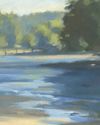
Movement in composition
Through an analysis of three masterworks, landscape painter and noted author MITCHELL ALBALA shows how you can animate landscape composition with movement

Shane Berkery
The Irish-Japanese artist talks to REBECCA BRADBURY about the innovative concepts and original colour combinations he brings to his figurative oil paintings from his Dublin garden studio

The Working Artist
Something old, something new... Our columnist LAURA BOSWELL has expert advice for balancing fresh ideas with completing half-finished work
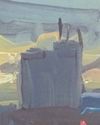
Washes AND GLAZES
Art Academy’s ROB PEPPER introduces an in-depth guide to incorporating various techniques into your next masterpiece. Artwork by STAN MILLER, CHRIS ROBINSON and MICHELE ILLING
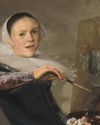
Hands
LAURA SMITH continues her new four-part series, which encourages you to draw elements of old master paintings, and this month’s focus is on capturing hands

Vincent van Gogh
To celebrate The Courtauld’s forthcoming landmark display of the troubled Dutch master’s self-portraits, STEVE PILL looks at the stories behind 10 of the most dramatic works on display
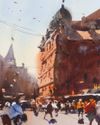
BRING THE drama
Join international watercolour maestro ALVARO CASTAGNET in London’s West End to paint a dramatic street scene
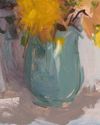
Serena Rowe
The Scottish painter tells STEVE PILL why time is precious, why emotional responses to colour are useful, and how she finds focus every day with the help of her studio wall

Bill Jacklin
Chatting over Zoom as he recovers from appendicitis, the Royal Academician tells STEVE PILL about classic scrapes in New York and his recent experiments with illustration